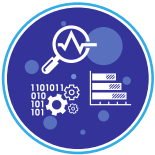Work Packages

Work Package 1: Management and Governance
This work package establishes the management structures for the STREAM operation. STREAM will successfully meet its aims and objectives through careful coordination of the operation’s activities which will be led by WIT in Ireland and SU in Wales.

Work Package 2: Specification
In the specification stage, the partners will confirm the specification of the operation and the location and scope of monitoring activity for each site in SE Ireland and Wales.

Work Package 3: Dissemination
In this work package we will develop the STREAM website; promote the project among Stakeholders, Coastal Communities and the General public.The key aim is to Build Awareness of Climate Change impacts and Disseminate the Scientific publications.

Work Package 4: Development of ICT enabled Sensor Technologies
for Estuarine Monitoring
Within this work package the sensor and ICT technologies will be developed. SU will develop a range of physical and chemical sensor technologies that will be interfaced with the Wireless Communications System developed by WIT-NRG. Additionally, WIT will develop a suite of wireless enabled optical sensors for the
monitoring of Harmful Algal Blooms in estuarine and coastal waters.

Work Package 5: Estuary Water Sampling & Precipitation Monitoring
In this work package partners will develop, deploy and test an innovative portable submersible adsorbent pumping platform to pre-concentrate marine bio-toxins and chemical contaminants in estuarine waters.

Work Package 6: STREAM Deployment
In this work package, sensor technologies will be deployed and modern ICT constructs such as sensor fusion and data fusion will be developed to minimize uncertainties in the returned data. These constructs will be developed further in Work Package 7 with the inclusion of data mining operation.

Work Package 7: Building capacity to respond to
climate change impacts on the Irish Sea
This work package is focused on providing a predictor – response solution to climate change impacts, in this scenario the monitoring system acts as the predictor of events, these events are simulated in the laboratory and the response is scientifically determined for different scenarios.


